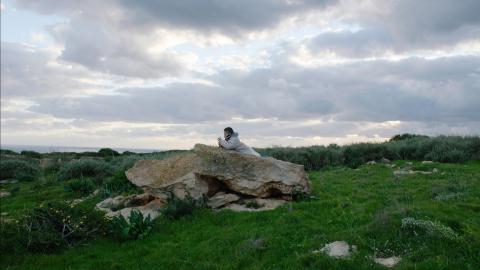film ‘Fire at Sea’ Is Not the Documentary You’d Expect About the Migrant Crisis. It’s Better.
There is a type of documentary — one of the most prevalent varieties these days — that earnestly acquaints its audience with a terrible problem and rewards our attention with a gold star of virtue. You know the kind of film I mean. We are presented with a tableau of human misery or global catastrophe that has been put together with the vague but unarguably noble intention of “raising awareness,” as if such awareness were itself a kind of solution. The rules of the genre, at least as observed by American filmmakers, dictate an upbeat conclusion. As grim as things may be, a solution can be imagined, and the simple act of watching is implicitly part of that solution.
While the sentiments behind this kind of filmmaking are unimpeachable, the cinema they engender is often dutiful and conventional. If you watch enough of them, the crises of our time — war, poverty, ecological disaster — can start to seem interchangeable. Documentaries, in other words, are as susceptible to formula as action movies or romantic comedies.
But there are, thank goodness, exceptions. And everything I’ve said so far is a long way of explaining what Gianfranco Rosi’s “Fire at Sea” is not. Mr. Rosi, an intrepid Italian documentarian whose previous work has taken him to the Ganges River, the California desert and inside the Mexican drug trade, is certainly a filmmaker with an active social conscience. “Fire at Sea” is the fruit of an extended sojourn on Lampedusa, an island that, while part of Italy, is closer to Tunisia than to Sicily. Recently, it has become the landing spot for boatloads of refugees and other migrants from Africa, Asia and the Middle East.
The Mediterranean is an escape route for these displaced people and, also, all too often, a graveyard. News reports of the migrants’ plight and images of overloaded boats and drowned bodies have tested the world’s capacity for indifference, and also challenged the compassion of European citizens and their leaders. The debate over what to do about this crisis, which is roiling politics in nearly every country on the Continent, provides “Fire at Sea” with a context. But the film’s subject is more elusive, at once more below the radar and beyond the reach of political discourse.
Mr. Rosi does not spare his viewers glimpses of horror and pain. His camera travels with members of the Italian coast guard as they perform acts of rescue and triage, as well as grimmer tasks. Many of the men, women and children packed into the battered vessels that ply the waters near Lampedusa suffer from hunger, exposure and illness. Some of them, who have endured their journeys below decks, have been poisoned by fuel that soaks into their clothing and burns their skin.
There is a brief, introductory onscreen note that provides numbers and background — tens of thousands have landed in Lampedusa and thousands have died trying. Otherwise, Mr. Rosi proceeds without voice-over or any other commentary, and also without music or narrative continuity. “Fire at Sea” is impressionistic and intensely absorbing. Like one of Frederick Wiseman’s documentaries, it compels you to infer a big picture from a series of extended, intimate scenes. At the end, you understand something about the texture and organization of life in Lampedusa, and about the effect that migration has had on the island, though it may be hard to put that understanding into words.
When not out on the boats or exploring the shelters and processing centers where refugees are housed, “Fire at Sea” spends time with some of Lampedusa’s permanent residents, in particular a doctor, Pietro Bartolo, and a boy, Samuele Pucillo.
Samuele is hardly a child of privilege. Life on a small, rocky island is not easy. But he has everything the refugees have lost: a stable daily routine, freedom of movement and a sense of belonging to the place where his family has lived for generations. A home, in short.
He has problems too, including homework, a lazy eye that requires a patch, chronic shortness of breath that may be the result of anxiety attacks. Dr. Bartolo, who treats the boy, also works with patients with much more desperate ailments. He is the film’s moral center of gravity, not a hero but heroically decent, someone for whom kindness is a habit and an instinct. This doctor can treat only one person at a time, and he tries to give each one — whether it’s a well-fed schoolboy or a hungry, delirious refugee — the full benefit of his calm, good-humored attention.
It’s not quite right to say that Samuele’s innocence and the doctor’s goodness represent signs of hope in an otherwise grim movie. I’m not sure that Mr. Rosi is interested in trafficking in hope, which is among his great virtues as a filmmaker. He takes a hard, empathetic look at reality, which contains wonders as well as horrors. He doesn’t bear witness — an overused and often presumptuous idea. He observes, with humility and precision. Instead of raising awareness, he cultivates alertness. “Fire at Sea” occupies your consciousness like a nightmare, and yet somehow you don’t want it to end.
“Fire at Sea” is not rated. It is in Italian, with English subtitles. Running time: 1 hour 48 minutes.
[A.O. Scott joined The New York Times as a film critic in January 2000. Previously, he was a Sunday book reviewer for Newsday, and a frequent contributor to Slate, The New York Review of Books and many other publications.]


Spread the word